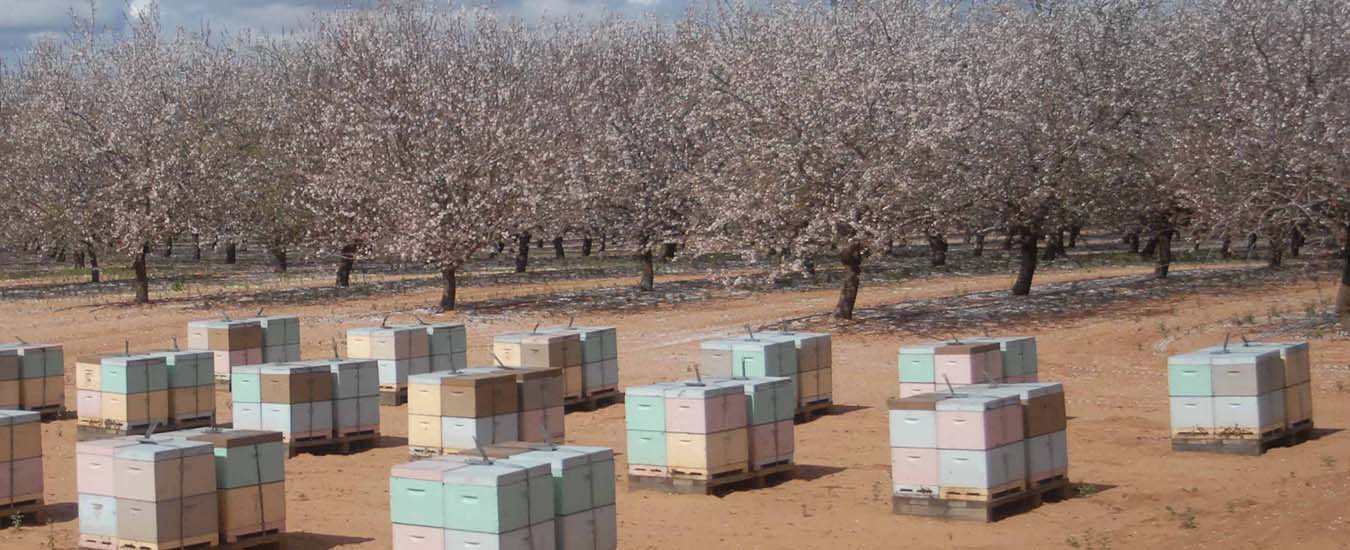Precision agriculture or “AgTech” is well known from fruit and vegetables producers, but it has only recently started to make its way into beekeeping. Hive sensors or “smart hives” may well help solve the pollination crisis.
Pollination services are crucial for many growers, but hive supply is often low and their hive represents a significant proportion of production costs. Using hive sensors may help beekeepers improve the health of bee colonies and reduce management costs. This could increase hive supply. The provision of information about bee colonies to growers could help improve the element of trust central to pollination contracts.
The field of beehive monitoring is new. We reviewed the scientific literature to determine how applicable this scientific knowledge is for beekeepers and growers. We found that :
- Thermometers and scales were the most studied hive sensors. Bees actively regulate temperature in hives to optimise brood development.
- Weight varies daily, as bees leave the hive and return loaded with pollen, nectar and water, and throughout the year depending on nectar flows.
- Scientists and sensor companies are also interested in measuring the carbon dioxide produced when bees breathe, and the humidity that comes mainly from the evaporation of nectar.
- There is also great interest in measuring sounds and vibrations, as these might indicate the presence of a queen, pests or bee swarms.
- Bee counters and radars have been around since the 1920’s, but recently technological progress allows to detect general bee activity at the entrance of hives more reliably.
The science around the interpretation of sensor data is relatively new. Scientists have so far focused on understanding what can be interpreted from sensors and how bee health can be estimated with sensors. We know for example, that a healthy bee colony with numerous foragers should stay around 34.5°C in warm outdoor conditions, and deviations from this optimum indicate that action is needed.
Companies that sell hive sensors worry less about understanding the mechanisms behind predicting bee health, than being able to produce useful metrics for beekeepers. Smart hive manufacturers have started converting hive temperature, weight, humidity and carbon dioxide levels into useful metrics, mainly using Artificial Intelligence. The downside is that it is difficult to understand how AI works, and errors may occur and are difficult to anticipate. The advantage of using AI is that it saves years of research into bee biology to rapidly produce metrics beekeepers can use.
A growing number of scientists and sensor companies indicate they can measure general colony health and predict the numbers of frames of bees inside a hive. The number of frames of bees is an increasingly important metric to negotiate pollination contracts. It is however laborious to estimate frames of bees for hundreds or thousands of hives, and a counter-expertise is sometimes requested, meaning bees are disturbed more often and costs increase. By placing relatively inexpensive sensors inside the hive, sensor manufacturers claim that they can estimate the number of bees that will fly and pollinate crops.
Our current research aims at identifying the needs of the pollination industry for such hive sensors. We interviewed and surveyed industry members, mainly growers and beekeepers, to find out what they would want out of sensors placed in hives. In our early results, beekeepers have indicated they want an easy-to-use sensor technology that supports their management decisions, is easy to interpret, and justifies its own cost. Growers see the benefit in receiving more information about colony health, to increase their trust and help build long-term relationships with beekeepers for pollination services. Overall, sensors could help counteract the decreasing availability of bee colonies and aid establishing fair prices for both parties. However, so far, only a few Australian beekeepers have adopted smart hives due to high costs and low availability on the Australian market.
Acknowledgements:
- This project is funded by Hort Innovation, using the Hort Frontiers Pollination Fund research and development levy, contributions from the Australian Government and co-investment from Macquarie University. Hort Innovation is the grower-owned, not-for-profit research and development corporation for Australian horticulture.
- This article was peer reviewed by Nadine Chapman and Rod Bourke.


